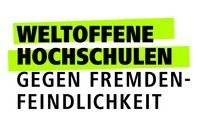This term was chosen to avoid the controversy around the term "learning styles". The concept refers to the fact that teaching is more effective if the learning experience resonates with learners' pre-conceptions, experiences and interests ("preferences") and adjusts to their cognitive, sensory and affective way of assimilating and conceptualising new knowledge ("needs"). More practically, it alludes to the fact that teaching strategies tend to be more successful if different sensory channels are combined; different angles and perspectives to a problem are facilitated; and if learners can link new concepts easily to their existing body of knowledge.
DigiKompASS Self-Assessment: GLOSSAR
specific terms marked *
*Learning needs and preferences
*Specific learning need
This term is used as an umbrella term for any condition legally recognised as giving rise to special educational attention. It includes educational requirements resulting from learning difficulties, physical disability or emotional and behavioural difficulties, i.e. documented disabilities that may be medical, mental or psychological (US: "special needs"). In this respect it refers to e.g. autism, cerebral palsy, down syndrome, blindness, cystic fibrosis, but also ADHD and dyslexia. By extension, the concept used in this questionnaire, also refers to other specific learning needs individual learners may have, e.g. intellectual giftedness or language barriers in the case of migrant or international learners.
*Student services
This term refers to the unit in charge of providing support to learners with *specific learning needs.
other terms
Data
Data as a general concept refers to the fact that some existing information or knowledge is represented or coded in some form suitable for better usage or processing. Data is measured, collected, reported and analysed, whereupon it can be visualized using graphs, images or other analysis tools (Wikipedia).
Digital content
Any type of content that exists in the form of digital data that are encoded in a machine-readable format can be created, viewed, distributed, modified and stored using digital technologies. Examples of digital content include: web pages and websites, social media, data and databases, digital audio, such as mp3s e-books, digital imagery, digital video, video games, computer programmes and software. For the DigCompEdu framework, digital content is divided into digital resources and data.
Digital environment
A context or a "place", that is enabled by technology and digital devices, often transmitted over the internet or by other digital means, e.g. mobile phone network. Digital environments are usually used for interaction with other users and for accessing and publishing user-created content. Records and evidence of an individual's interaction with a digital environment constitute their digital footprint.
Digital resources
The term usually refers to any content published in computer-readable format. For the purposes of DigCompEdu, a distinction is made between digital resources and data. Digital resources in this respect comprise any kind of digital content that is immediately understandable to a human user, whereas data need to be analysed, treated and/or interpreted to be of use for educators.
Digital technology
Any product or service that can be used to create, view, distribute, modify, store, retrieve, transmit and receive information electronically in a digital form. In DigCompEdu, the term "digital technologies" is used as the most general concept, comprising
● computer networks (e.g. the internet) and any online service supported by these (e.g. websites, social networks, online libraries, etc.),
● any kind of software (e.g. programmes, apps, virtual environments, games), whether networked or installed locally;
● any kind of hardware or "device" (e.g. personal computers, mobile devices, digital whiteboards); and
● any kind of digital content, e.g. files, information, data.
alternative terms for translation: Digital media, ICT
Digital tools
Digital technologies used for a given purpose or for carrying out a particular function of e.g. information processing, communication, content creation, safety or problem solving.
alternative terms for translation: Digital media, ICT
Educator
In the context of DigCompEdu, the term "educator" is used to generically refer to any person involved in the process of teaching or transmitting knowledge. In particular, it refers to teachers at all levels of formal education, ranging from pre-primary, primary and secondary, to further and higher education (e.g. university lecturers), to vocational and adult education including initial training and continuous professional development. It may, by analogy, also be used to describe people involved in providing training in non-formal and informal settings, e.g. social workers, library staff, parents providing home schooling, etc.
e-Portfolios
Collections of (students') work that can advance learning by providing a way for them to organize, archive, display and reflect on their work. E-portfolios are both demonstrations of users’ abilities and platforms for their self-expression.
Open Education
According to the OpenEdu Framework (JRC, 2016): It is a way of carrying out education, often using digital technologies. Its aim is to widen access and participation to everyone by removing barriers and making learning accessible, abundant, and customisable for all. It offers multiple ways of teaching and learning, building and sharing knowledge. It also provides a variety of access routes to formal and non-formal education, and connects the two.
Self-Assessment
Self-assessment involves the ability to be a realistic judge of one’s own performance. Proponents of self-assessment suggest it has many advantages, for example, it: provides timely and effective feedback and allows learners to assess their own learning quickly; allows educators to understand and provide quick feedback on learning; promotes academic integrity through [student] self-reporting of learning progress; promotes the skills of reflective practice and self-monitoring; develops self-regulated learning; increases learner motivation; improves satisfaction from participating in a collaborative learning environment; helps learners develop a range of personal, transferrable skills to meet the expectations of future employers.
Source: Cornell University Centre for Teaching Excellence http://www.cte.cornell.edu/
Student
Learner in formal education, irrespective of level or sector.





